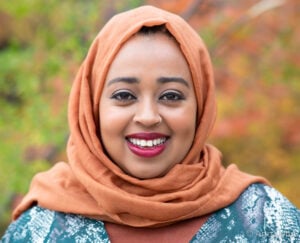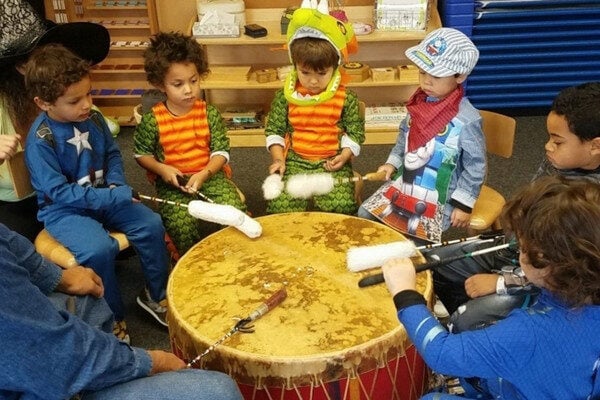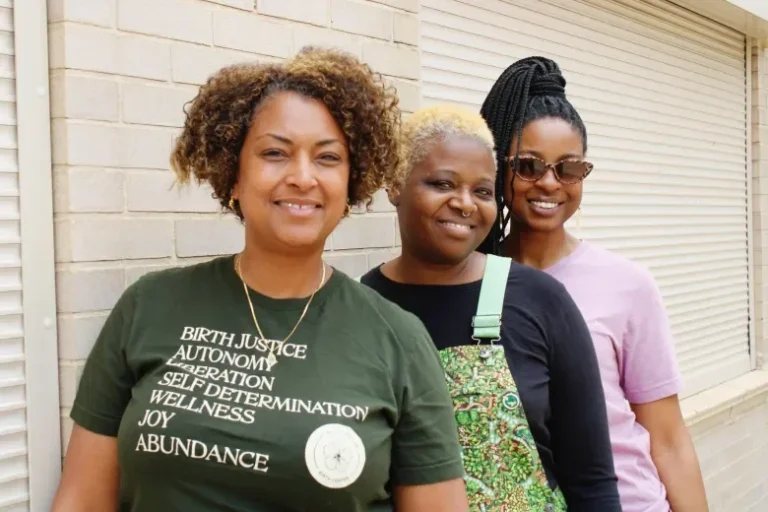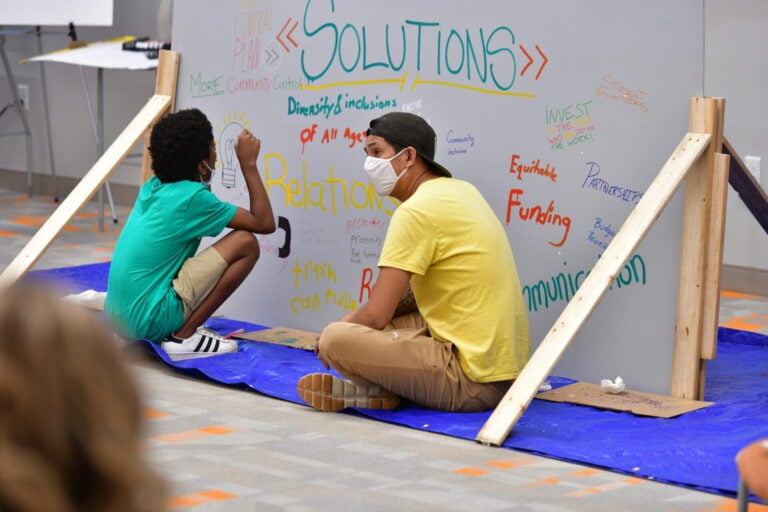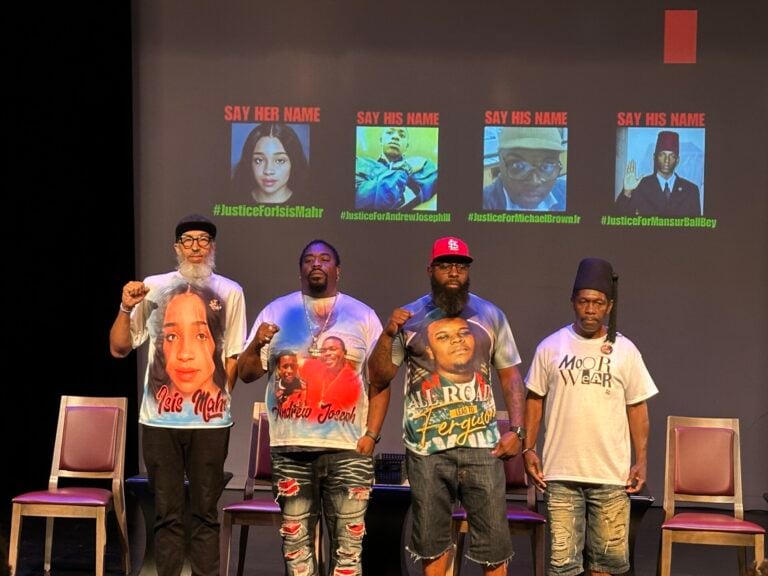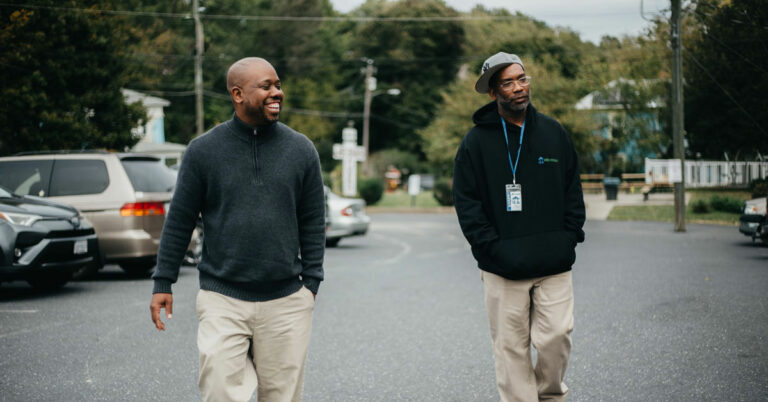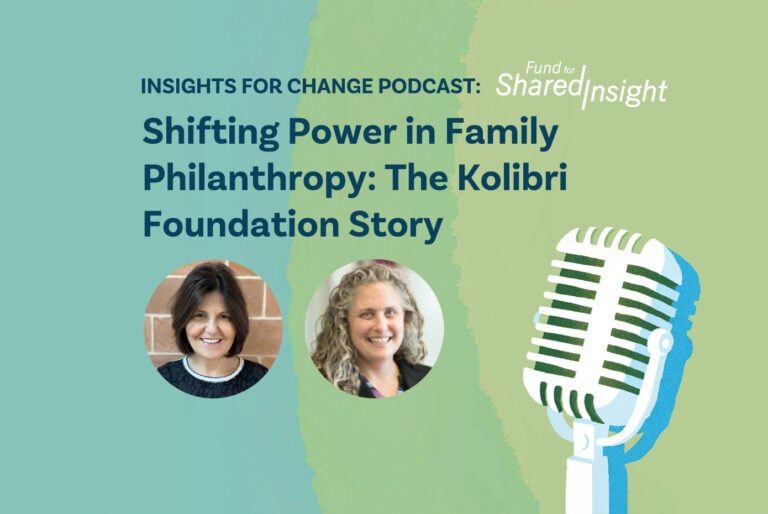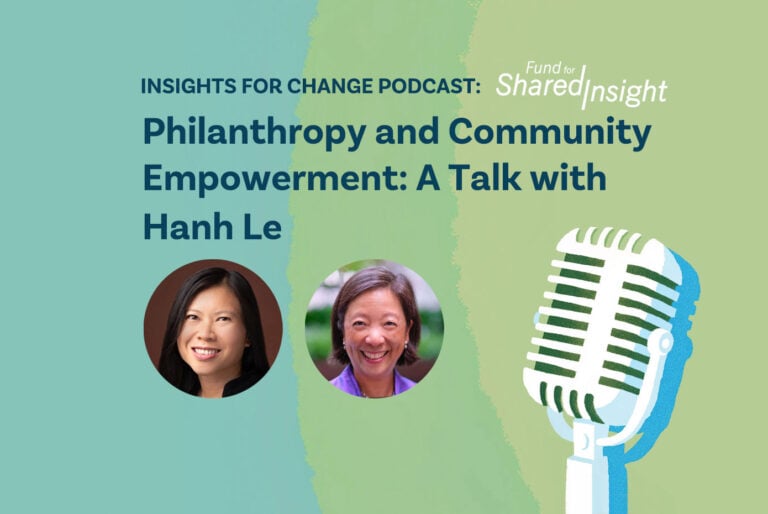For decades, the nonprofit and philanthropic sectors have sought to address challenges in communities that have endured the lasting impacts of colonization and systemic inequities. One key lesson has emerged: when nonprofits and foundations dictate solutions unilaterally: progress tends to be slow, unsustainable, and misaligned with community needs.
Recognizing this, the Mortenson Family Foundation has been intentionally shifting power to communities, ensuring that those most affected by systemic issues have a voice in decisions about how and where resources are allocated. We believe that people within and closest to communities are best positioned to define and implement solutions that are meaningful, relevant, and lasting.
By rethinking our approach, we are striving to build more equitable partnerships — ones that center community voices, foster trust, and create lasting, community-driven change.
A new table, set together
When the foundation was established in 1999, it operated much like many other family foundations — without systematic community input. One of its three grantmaking programs accepted applications by invitation only, and across all programs, foundation staff reviewed applications and proposed grants to the governing board, which ultimately decided how funds were distributed. Grant recipients were required to submit written reports, with no alternative options like verbal recordings or interviews, reinforcing power imbalances between funders and grantees. While this was in part because of capacity at the time, these traditional practices often discouraged nonprofit leaders from expressing their true needs, limited accountability on the part of the foundation, and failed to elevate communities in the way they deserved. As the foundation’s capacity grew and the board evolved its equity journey, our grantmaking practices changed.
Now, each program’s grantmaking committee consists of five community leaders and no more than four Mortenson family members — a deliberate structure that ensures the voices of people closest to the work hold the majority. The committees make recommendations to the governing board, comprised of family members, including those serving on the committees, where their decisions are almost always upheld.
Now, each program’s grantmaking committee consists of five community leaders and no more than four Mortenson family members — a deliberate structure that ensures community voices hold the majority.
The work of the committees has been a collaborative process from the start: we wanted it to be clear that we weren’t going to ask community members to sit at a table already set, but instead have them be part of determining what the grantmaking would look like.
Before we invited people to join the committees, we invited them — grant partners and applicants, community leaders, and anyone interested in the issues — to listening sessions where we heard their ideas about grantmaking and whom should be involved. Through that process and with input from committee members once they were seated, our Expanding Opportunities for Children and Families grant program, which I facilitate as a foundation staff member, was completely reimagined, with rewritten guidelines, revamped application processes, and entirely new review practices.
I vividly remember sitting with that program’s newly formed committee (five community leaders and four Mortenson family members) as they pored over each line of the grant application. A community leader pointed to a phrase and said, “I understand how popular the term ‘BIPOC’ has become as a catch all phrase for communities of color, but they are not monolithic and actually deserve to be named individually.” That feedback highlighted that the words we use truly matter, and it led to a great conversation about how we can, through our writing of the grant application, honor each community we hope to reach.
Letting the work build the trust
When people from different backgrounds and different life and professional experiences come together to share power, building relationships and trust might feel like a huge hurdle that needs to be cleared before starting the work. But we discovered that engaging in the work can itself create the trust we seek.
By the second year of the Expanding Opportunities for Children and Families grant program, the nine-member committee had clearly — and organically — formed close bonds. They used shorthand to refer to applications, joked with each other, and debated passionately yet respectfully about the merits of a particular program. While tough decisions were being made, the room was filled with deep respect and camaraderie.
In one instance, a community member on the committee, shared why she had scored an application highly. “This program,” she said, “is exactly what I needed when I was younger.” Her vulnerability sparked a rich discussion about personal experiences and the kinds of programs that have the most meaningful impact.
At another time, a committee member voiced concerns about an upcoming funding cliff in a school district and provided history and context on how this came to be, then another committee member jumped in with insights from their own experience. What followed was a thoughtful, collaborative discussion that led to actionable ideas for future grantmaking and engagement.
This evolution from some initial hesitancy to interact or speak up in committee meetings to confident, organic dialogue shows how the relationships built through doing the work have created a space for genuine thought partnership.
In one instance, a community member on the committee, shared why she had scored an application highly. 'This program,' she said, 'is exactly what I needed when I was younger.'
Foundation staff’s new role
Another big change came in the form of staff roles. In 2018, when the foundation started to execute on its new mission focused on advancing equity, it expanded its team to bring on Community Relationship Officers, positions intentionally designed to center both the lived and professional expertise of BIPOC people. Unlike the traditional program officer role at many foundations, which typically emphasizes grants management, the Community Relationship Officer prioritizes building trusted relationships with grant partners and the community at large. Initially, staff in that role also served as subject matter experts, reviewing grant applications and making funding recommendations to the board. With the introduction of the new grantmaking committees, however, our role has evolved to focus on facilitating the committee’s work, turning over decision making to them,
Our role is also about building and keeping strong relationships with grant partners; engaging with organizations across the ecosystems in which we work (in my case, education and youth development); and showing up in communities in ways that keep us informed and grounded in what’s happening.
As facilitators (and notetakers!) for the grantmaking committees, we come without predetermined answers, instead we work with the groups to tap into their own expertise. We provide training, capacity building, leadership development, and we help connect committee members to one another and to additional resources. The goal is to foster a committee that can collaboratively make decisions and solve problems.
Moments of tension, while challenging, are an essential part of the process. But we found that over time, as trust deepens, tensions can dissipate naturally through open discussion. At one meeting when tensions were high, a committee member remarked, “Because of my profession, I’m more drawn to quantitative data and really prioritize it in the applications.” This candid statement helped others appreciate the significance of quantitative data from that member’s point of view. Starting conversations by identifying what matters to us and the perspectives we bring fosters a more honest and empathetic dialogue, ultimately leading to better outcomes.
Process as part of the product
The big changes we are making at the Mortenson Family Foundation through our grantmaking processes and following our values in other ways are all about creating better outcomes. But what we are learning along the way is that the process — messy, iterative, deeply human — is part of the product, too. It’s in the work, the tension, and the collaboration that relationships are forged and trust is built. As one committee member stated, “Equity work is messy, but it is so worth it!”
We agree, and remain committed to the work of shifting power to communities. Because when we set the table together, we’re creating the foundation for lasting change.
Building Trust Through the Work: Five Strategies That Made a Difference
Engaging a diverse committee of community members and family members takes intentional effort — and trust is foundational. Here are six strategies that were helpful in fostering collaboration and shared ownership throughout our process:
- Prioritize transparency and clarity
Clearly communicate what’s open for change and what’s not. Honoring community feedback means showing how it’s used, even when there are constraints. Clarity reduces confusion and builds confidence. We made sure everyone — especially committee members — understood their roles, how decisions would be made, and what the timeline looked like.
As we often say, clarity is kindness. That meant spending time, both one-on-one and as a full group, reviewing the grant guidelines and everyone’s role. One important question that surfaced was whether the Mortenson family had any legacy organizations that would be automatically funded without review. The answer was a clear no. Family members and staff emphasized that all organizations go through the same review process, and funding decisions are made collaboratively by the full committee — with no special preferences.
- Name and shift power dynamics
We acknowledge existing power imbalances among the members of the grantmaking committees and use facilitation tools to make sure everyone feels there is a level playing field and they are heard.
As a facilitator, I am intentional about creating space for all voices — especially those less likely to speak up. Reinforcing a culture of mutual respect and shared power has led committee members to make some shifts, such as pausing to hear from quieter voices or encouraging others to share.
- Invest in relationships
Strong relationships build trust and improve decision making. That’s why we intentionally created space for connection — not just during meetings, but throughout the process.
One of the things I love most about this work is the opportunity to build meaningful relationships with committee members and the broader community. Relationship-building isn’t a side note for us, it’s a core value, and it shows in how the committee shows up for community.
- Commit to continuous learning
We approach the work with humility and curiosity. We don’t have all the answers — and that’s okay. What matters is being willing to learn, adapt, and grow.
In its third year, members of the grantmaking committee for Expanding Opportunities for Children and Families wanted to deepen their understanding of evaluative practices across our focus areas. In response, we invited guest experts to lead a learning session on how to approach evaluation when reviewing applications. This was just the beginning — the committee is eager to continue learning together in future cycles.
- Lift up community assets
We recognize and celebrate the unique strengths, networks, and cultural knowledge that each member brings to the table.
Throughout our work, there’s been a consistent appreciation for lived and professional expertise. Committee members naturally defer to each other when specific knowledge is needed, and there’s deep respect for the insights shared. This mutual appreciation strengthens both the process and the outcomes of our work.
About the author:
